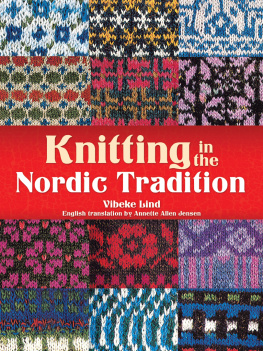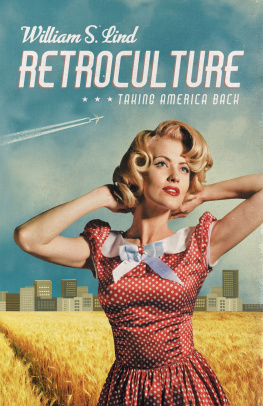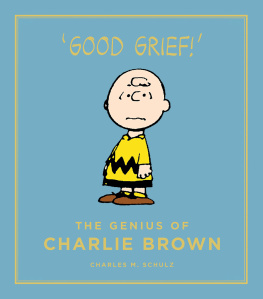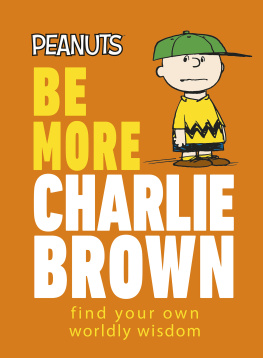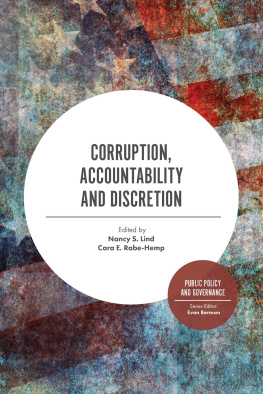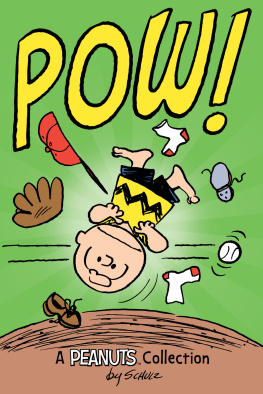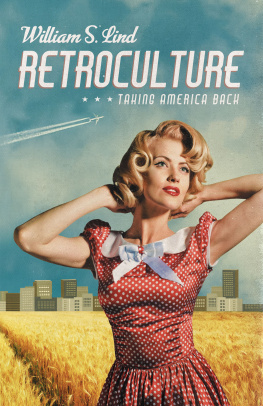Lind - A Charlie Brown Religion
Here you can read online Lind - A Charlie Brown Religion full text of the book (entire story) in english for free. Download pdf and epub, get meaning, cover and reviews about this ebook. year: 2015, publisher: University Press of Mississippi, genre: Detective and thriller. Description of the work, (preface) as well as reviews are available. Best literature library LitArk.com created for fans of good reading and offers a wide selection of genres:
Romance novel
Science fiction
Adventure
Detective
Science
History
Home and family
Prose
Art
Politics
Computer
Non-fiction
Religion
Business
Children
Humor
Choose a favorite category and find really read worthwhile books. Enjoy immersion in the world of imagination, feel the emotions of the characters or learn something new for yourself, make an fascinating discovery.

- Book:A Charlie Brown Religion
- Author:
- Publisher:University Press of Mississippi
- Genre:
- Year:2015
- Rating:3 / 5
- Favourites:Add to favourites
- Your mark:
- 60
- 1
- 2
- 3
- 4
- 5
A Charlie Brown Religion: summary, description and annotation
We offer to read an annotation, description, summary or preface (depends on what the author of the book "A Charlie Brown Religion" wrote himself). If you haven't found the necessary information about the book — write in the comments, we will try to find it.
Lind: author's other books
Who wrote A Charlie Brown Religion? Find out the surname, the name of the author of the book and a list of all author's works by series.
A Charlie Brown Religion — read online for free the complete book (whole text) full work
Below is the text of the book, divided by pages. System saving the place of the last page read, allows you to conveniently read the book "A Charlie Brown Religion" online for free, without having to search again every time where you left off. Put a bookmark, and you can go to the page where you finished reading at any time.
Font size:
Interval:
Bookmark:
A CHARLIE
BROWN
RELIGION
GREAT
COMICS
ARTISTS
SERIES
M. Thomas Inge,
General Editor
BROWN
RELIGION

EXPLORING THE SPIRITUAL LIFE AND WORK OF CHARLES M. SCHULZ
STEPHEN J. LIND

www.upress.state.ms.us
Designed by Peter D. Halverson
The University Press of Mississippi is a member of the Association of American University Presses.
Copyright 2015 by University Press of Mississippi
All rights reserved
Manufactured in the United States of America
First printing 2015
Library of Congress Cataloging-in-Publication Data
Lind, Stephen J., author.
A Charlie Brown religion : exploring the spiritual life and work of Charles M. Schulz / Stephen J. Lind.
pages cm. (Great comics artists series)
Includes bibliographical references and index.
ISBN 978-1-4968-0468-6 (hardback) ISBN 978-1-4968-0469-3 (ebook) 1. Schulz, Charles M. (Charles Monroe), 19222000Religion. 2. Schulz, Charles M. (Charles Monroe), 19222000. Peanuts. 3. Comic books, strips, etc.United StatesReligious aspects. I. Title.
PN6727.S3Z765 2015
741.56973dc23
2015021087
British Library Cataloging-in-Publication Data available
Display font Frente H1 courtesy of www.frente.cc
THIS BOOK IS YOURS.
SL

I WAS SITTING AT A HEAVY WOODEN TABLE SIFTING THROUGH BOXES OF OLD photos and letters at the Charles M. Schulz Museum and Research Center several years ago when the archive doors latch clicked open, signaling that someone was going to interrupt the silence of shuffled papers. While I was engrossed in reading notes that Charles Schulz had received over decades of work (the letter writers who knew him well called him Sparky; the ones who didnt misspelled his name as Schultz), I was always happy to have a new face come in, as it gave me another chance to learn about Sparky and his Peanuts properties. I must admit, though, that I was a little taken aback to see that Jeannie Schulz, Sparkys widow, was walking through the door. I was even more shocked when she said that she had come down to introduce herself to me!
It would not be long before I would know Jeannie and the five Schulz children to be wonderfully gracious supporters of my research, for which I am so deeply thankful. Soon after we first shared introductions and as I was still working to get my sea legs back, Jeannie started casually telling a story about one of the franchise operations. At one of the high points in her story, I involuntarily interjected Good grief! Now, its entirely normal to audibly respond when someone is telling you a story, but my mind immediately started spinning. While I use the phrase quite often, I couldnt help but wonder, Can I say Good grief! to Charles Schulzs widow?! Is this allowed?! I dont believe she noticed. If she did, it thankfully wasnt a deal breaker. After all, I am far from the first person to be influenced by the remarkable work of the late Charles Schulz.
Etching Good grief! and security blanket and the off-screen teachers wah wah wah wah into the cultural vocabulary are merely the tips of the iceberg that is Schulzian success. Over his life, Schulz received the highest of awards, including Emmy, Peabody, and Congressional Gold Medal honors, along with two honorary doctorates and a Pulitzer Prize nomination. Americas Apollo 10 lunar module was even named Snoopy. The command module was named Charlie Brown. With 17,897 Peanuts strips in newspapers, seventy-five (and counting) animated titles, and multi-million-dollar consumer product licensing (not including the countless unlicensed knockoffs and parodies), Charles Schulz clearly found a voice that engaged the American and global publics as he drew Peanuts for half of a century. Routinely ranking in the top five of Forbes magazines Top Earning Dead Celebrities list (number three in 2013, only behind Elvis Presley and Michael Jackson), Charles Schulz and his massive Peanuts brand continue to make an impact in contemporary culture.
Many often wonder why Schulzs work has resonated so strongly and for so long. While there is no algorithm for such an impact, there are a few important elements that he mastered along the way. First, his work is simply funny. Sometimes its complexly funny. Schulz sought to draw funny pictures for the newspapers to make readers chuckle, and he succeeded. His artwork is deftly crafted in such a way that with the smallest jot of India ink he could give Snoopys face the most ridiculous of expressions, bringing a wide grin to the readers face. Second, his work is authentic. Charles Schulz spoke from an original, often introspective voice, primarily addressing an adult readership in his comics (though the animated specials would turn slightly more toward family and child audiences). He took clever, even heavy and provocative thoughts from his own mind and put them on paper in a deceptively simple way that the cliffhanger strips of his childhood would never imagine. His was never the voice of factory output but rather one of sincerity. Readers could trust his voice. They could believe it.
Third, his work is open-ended. Not only did he have a lot of white space in his comics and often very little action (sometimes an entire At other times, as will be the primary focus of this book, he invited readers not only to chuckle but also to think for a moment about diverse spiritual issues, including prayer, Scriptures, end-times theology, and church denominationalism.
Over the years, readers would pick up on these cues in simple and robust ways. While Clark Gesner would pen the most-ever performed Broadway musical Youre a Good Man, Charlie Brown (taken up by almost every school and college troupe across the country at one time or another), in which Schroeder sings from Matthew 4:4 that man does not live by bread alone, Bert V. Royal would write his own unauthorized and dark off-Broadway play entitled Dog Sees God, in which angsty teenage versions of the Peanuts cast movingly struggle to deal with issues of life and death.
Readers and viewers from diverse stations in life have been powerfully impacted by the franchise. When battling through a traumatic brain aneurysm as a small child, for instance, a Snoopy-hugging-Woodstock piggy bank the hospital staff gave young Scott Alan Blanchard became so meaningful that it inspired him later in life to donate to his local childrens hospital and other research centers.demonstrate, such connections are not only the privilege of children, but countless adults as well, especially when related to the meaningful issues of religious faith that Schulz dared include in his work.
Peanuts is not just about a silly dog that can be discarded as mere pop culture. There is no such thing as mere pop culture, and Peanuts is much more than silly... and about more than just a dog. Media research has routinely demonstrated that such properties can carve deep, lasting grooves in our society. In television research, for example, Gerbner, Gross, Morgan, and Signorielli have described television as a centralized system of storytelling it is worth noting when a franchise, even one featuring a funny little dog, bucks tradition and gives voice to ideas that studio executives think should not be broached. At one important moment on television, this included a child reciting from Scriptures the real meaning of Christmas. These spiritual ideas are important to us. Giving voice to them impacts us.
Next pageFont size:
Interval:
Bookmark:
Similar books «A Charlie Brown Religion»
Look at similar books to A Charlie Brown Religion. We have selected literature similar in name and meaning in the hope of providing readers with more options to find new, interesting, not yet read works.
Discussion, reviews of the book A Charlie Brown Religion and just readers' own opinions. Leave your comments, write what you think about the work, its meaning or the main characters. Specify what exactly you liked and what you didn't like, and why you think so.


